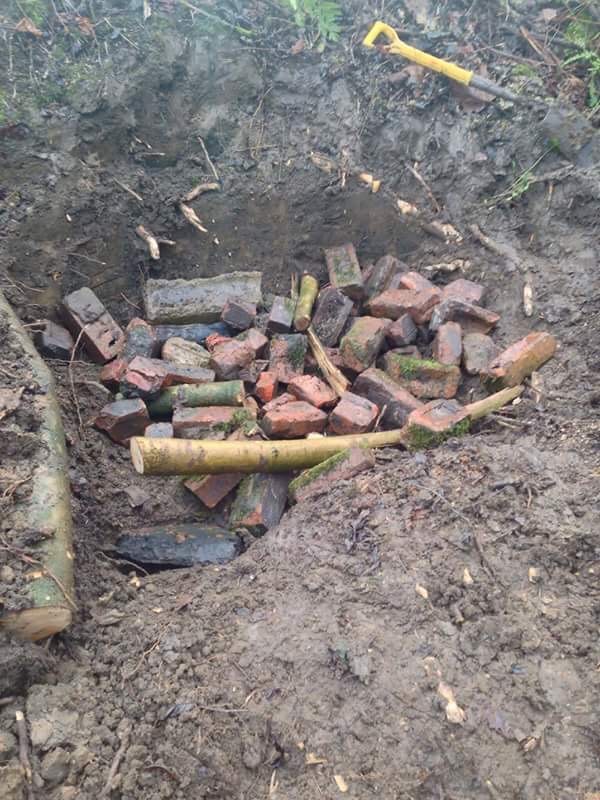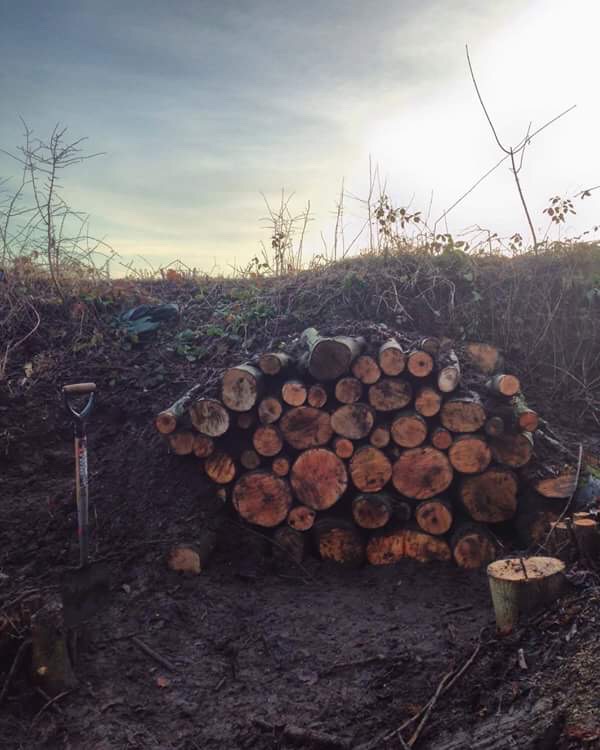Waste not, want not

Creating new sustainable habitats is a big part of the work we do here at WWT Washington Wetland Centre; and where there's waste there's an opportunity!
You may have noticed some tree work going on around our site where a number of ash trees have been cut to allow younger trees to thrive. As part of our bid to create new habitats on our site, we have used the leftover timber to create a hibernaculum (a purpose build place for wildlife to shelter) that a variety of wildlife will benefit from.
Our fantastic reserve team alongside volunteers have taken a small dug out area on the bank and filled it with broken bricks, rubble and small logs, creating cavities and small areas for species to nest or hibernate. They then piled different sized logs (taken from the ash trees) on top of the ubble. The different log sizes give it an attractive yet natural look, while making sure no large gaps are left. The sides and top were then covered with the leftover soil. In time it will rot down and create a great micro habitat and home for small mammals, invertebrates, fungi and amphibians. Small birds such as wren could also potentially nest in it.

Why do manage our trees?
Trees account for more than 11 hectares of our site and so it is essential that they are well maintained. As part of our woodland management plan, each year an inspection of all of the trees at WWT Washington is undertaken by an external tree safety company. This inspection identifies and gives guidance on a number of areas including tree condition, how safe a tree is (for visitors, staff and wildlife), whether any tree diseases are present and the general health of the tree areas on site. The results of these inspections, alongside our long term reserve management plan help us make decisions on the tree work necessary that year.
We may need to fully remove an unsafe tree, or one which has grown so large that it is preventing new trees from growing. If we don't make sure this happens, eventually we would be left with a site which can't sustain its tree population and this would be bad news for biodiversity of both the trees and the wildlife which depends upon them.
We may also pollard or coppice some trees that have grown very large. This is essentially cutting them back as an alternative to removal. It can look very harsh at the time but will result in enabling the tree to regenerate and flourish in the coming months. We may clear a section where one type of tree has become dominant over other important species but we’ll always do this with consideration, ensuring that there are sufficient numbers of each tree to meet the needs of the site.
We have quite a small window of opportunity to get all of the above done. Whilst we may not see young birds on site until early spring, the birds, especially, begin the breeding process during the winter. They’re prospecting for sites and partners and competing for breeding territories alongside all the other birds doing exactly the same thing. It’s as important that we don’t disturb them at this time as it is when they’re actually nest building, incubating, hatching and rearing young so we really do only have a few intensive weeks to get this done.



